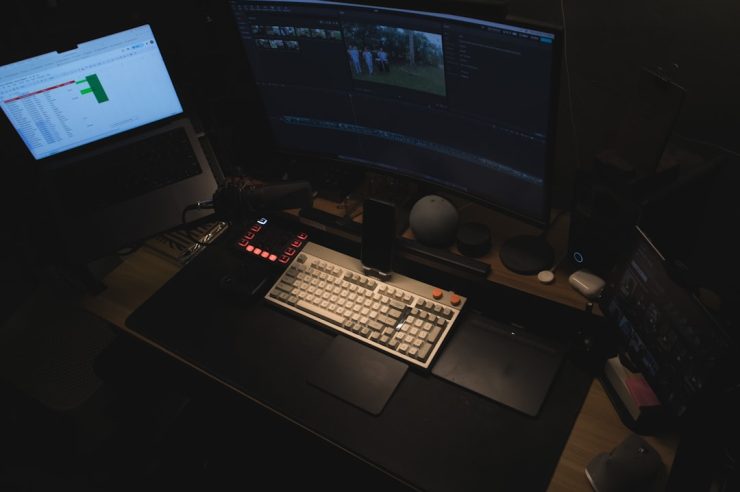In the age of digital media, editing images and videos is more accessible than ever. One of the most versatile and simple tools in any editor’s toolkit is the square overlay. Whether you’re creating content for social media, professional presentations, or educational tutorials, adding a square overlay can help emphasize details, maintain visual balance, or add creative flair to your visuals.
A square overlay is simply a square shape—often translucent or colored—placed on top of a picture or video element. It can serve many roles, from highlighting a specific element to framing key subjects within the visual. With the right tools and a little creativity, it becomes easy to understand why the square overlay maintains its reputation as a must-use design component.
Contents
What is a Square Overlay Used For?
There’s a wide range of practical uses for applying square overlays in photo and video editing scenarios. Here are a few common purposes:
- Highlighting Important Areas: A square overlay can draw the viewer’s attention to crucial parts of your content, like a person’s face, product feature, or chart section.
- Adding Artistic Effect: Designers use overlays not just for emphasis, but also to add layers of style, shadows, and atmosphere to visuals.
- Creating Layout Grids: In photo collages, stories, or Instagram posts, square overlays can help maintain symmetry and structure.
- Concealing Sensitive Information: Black or blurred square blocks are often used to hide confidential or unwanted content in a frame.
- Enhancing Branding: By using consistent overlay shapes in brand colors, creators can reinforce visual identity across all media.
[ai-img]video editing, square overlay, highlight section[/ai-img]
How to Add a Square Overlay
Adding a square overlay depends on the tool or platform you’re using. Here’s a basic guide for three popular methods:
1. Photo Editing Software (e.g., Photoshop, GIMP)
- Open your image in the editor.
- Select the ‘Shape’ or ‘Rectangle’ tool and draw a square over the desired area.
- Adjust the fill color and opacity to make the square semi-transparent if needed.
- Export the edited image once satisfied.
2. Video Editing Tools (e.g., Adobe Premiere, Final Cut Pro)
- Import your footage to the timeline.
- Add a solid color layer and size it to a square shape using scale tools.
- Use position tools to place overlay, and adjust its transparency.
- Animate the overlay if necessary for dynamic effects.
3. Online Editors and Apps (e.g., Canva, CapCut)
- Create a new project and upload your media.
- Add a shape layer and select a square or resize a rectangle.
- Choose your color and transparency settings.
- Download and share your finished result.
Editing on mobile has also become incredibly powerful. Apps like InShot and Lightroom Mobile allow users to implement square overlays in just a few taps, without needing high-end equipment.
[ai-img]mobile editing, square shape, image highlight[/ai-img]
Best Practices for Using Square Overlays
When designing with square overlays, follow a few best practices to maintain viewer engagement and keep visuals balanced:
- Use colors that complement your overall palette to prevent clashing visuals.
- Don’t overdo opacity; overlays should enhance, not block the content.
- Align overlays with visual gridlines to create symmetry and better focal points.
- Test on different screens to ensure overlays look good on both desktop and mobile displays.
Conclusion
Square overlays may be simple in concept, but they hold tremendous potential in the world of visual editing. They help editors tell better visual stories, enhance message clarity, and bring order to a composition. Whether you’re a seasoned content creator or just starting, mastering the use of square overlays will elevate your work in meaningful ways.
FAQ
-
Q: Can I change the color of a square overlay?
A: Yes, most editing tools allow you to fully customize the color, gradient, and opacity of your square overlay. -
Q: Will adding overlays affect video export quality?
A: As long as you’re exporting at high resolution, overlays won’t reduce quality, though rendering speed might be slightly affected. -
Q: Are overlays reversible in non-destructive editing?
A: Absolutely. Most modern tools support non-destructive editing, letting you adjust or remove overlays later without altering the original media. -
Q: Which file formats maintain overlays correctly?
A: For images, use PNG to preserve transparency. For videos, MP4 or MOV formats are well-suited for overlays. -
Q: Can I animate a square overlay?
A: Yes, in video editors you can animate overlays using keyframes to move, scale, or fade them for more dynamic visuals.



